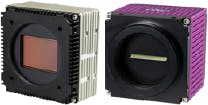On-Orbit Satellite Imaging Case Study
Background of the Product Development:
Satellites play a critical role in modern communication, Earth observation, and scientific research. For on-orbit satellites, the optical systems used are of utmost importance in capturing high-quality images and data. However, designing optical systems for space applications is fraught with challenges. Size limitations, the need for a large field of view, and high relative aperture requirements pose significant obstacles for traditional optical designs.
In the past, coaxial systems have been used in satellites but suffer from a restricted field of view, central obscuration, and reduced ideal transfer functions, making them inadequate for capturing comprehensive images of vast areas. On the other hand, off-axis systems, while providing a larger field of view, encounter difficulties related to central obscuration and limitations on relative aperture. The development of an innovative optical system that could overcome these challenges became a crucial goal for advancing satellite imaging capabilities.
Obstacles of General Products:
Traditional optical systems used in satellites face several obstacles that hinder their optimal performance. Coaxial systems, such as the on-axis TMA (Three-Mirror Anastigmat), suffer from limited field of view, large central obscuration, and reduced ideal transfer functions. These limitations result in a compromised imaging performance, especially in scenarios requiring a wide coverage area.
Off-axis optical systems, although capable of offering a larger field of view and reduced central obscuration, also face limitations when trying to achieve a large relative aperture. This limitation affects the system’s light-gathering capability and, consequently, its ability to function effectively in low-light conditions. Furthermore, optimizing off-axis systems for space applications while maintaining a compact design has been a complex challenge.
How F1500 Off-Axis Three-Mirror System Overcame Obstacles:
To overcome the obstacles posed by traditional optical designs, Avantier developed the F1500 Off-Axis Three-Mirror System, a pioneering solution that revolutionizes satellite imaging capabilities. The F1500 system employs an innovative off-axis intermediate imaging three-mirror optical architecture to address the challenges of size limitations, field of view, and relative aperture requirements.
The off-axis design of the F1500 system enables it to maintain a fully symmetrical structure with a concave-convex-concave mirror arrangement. This design effectively corrects axial aberrations and ensures a high-quality, diffraction-limited imaging performance. The F1500 system’s off-axis configuration not only achieves a large field of view but also maintains a short overall length, essential for space applications where size and weight must be minimized.
Product Details:
1. Optical System Specifications:
– Effective Aperture: The F1500 system features an effective aperture of 150mm, allowing for efficient light collection and superior image resolution.
– Relative Aperture: With a relative aperture of 1/10, the F1500 system excels in light-gathering capabilities, making it ideal for imaging in challenging lighting conditions.
– Focal Length: The optical system’s focal length is set at 1500mm, striking a balance between field of view and image resolution, catering to a variety of satellite imaging needs.
– Field of View (FOV): The F1500 system achieves a wide FOV of 0.61°, allowing for comprehensive coverage of target areas during on-orbit observations.
– Working Wavelength: Operating within the range of 400nm to 900nm, the optical system captures a broad spectrum, suitable for various scientific and observational applications.
2. Selection of Optical Systems:
After thorough evaluation of four total internal reflection system structures, Avantier concluded that Plan 3, an off-axis three-mirror system, best suits the requirements of the F1500 system. Plan 3 offers significant advantages, such as distortion aberration correction, a large field of view, and a short optical tube length, making it the optimal choice for on-orbit satellite imaging missions. Additionally, its concave-convex-concave mirror configuration allows for effective correction of lateral aberrations, ensuring precise and high-quality imaging.
3. Optical System Design:
To achieve diffraction-limited imaging quality and a compact structure, the F1500 Off-Axis Three-Mirror System underwent meticulous optical design and precise aberration correction. By utilizing ellipsoidal primary and tertiary mirrors, along with a hyperbolic secondary mirror, the system optimizes imaging performance across the field of view. The transfer function curve demonstrates that the F1500 system surpasses 0.37 at the Nyquist frequency of 90lp/mm, exceeding imaging quality requirements and ensuring sharp and detailed imagery.
Optical system structure
4. Opto-mechanical Design:
The opto-mechanical design of the F1500 system ensures precise alignment and integration of its optical components. The complete system comprises a mechanical frame, mirror sets, focal plane set, folding mirror set, and camera mount. Titanium alloy and glass-ceramic materials are strategically used to achieve lightweight construction and thermal stability. Implementing backside single-point support with adhesive material enhances component stability, ensuring reliable operation in the harsh environment of space.
Optical system
Prototype structure
Mirror set – structure configuration
5 Assembly Size and Weight:
The F1500 Off-Axis Three-Mirror System boasts a compact assembly size of 380mm x 233mm x 450mm and a total mass of 32.59kg. The weight distribution includes primary, secondary, and tertiary mirror sets, focal plane set, mechanical barrel, camera mount, and other components. These design choices and material selections contribute to the system’s overall efficiency, enabling optimal performance in on-orbit satellite imaging missions.
Conclusion
The F1500 Off-Axis Three-Mirror System represents a significant advancement in space-based optical technology, empowering satellite missions with superior imaging capabilities and improved data acquisition for various scientific and observational applications. By overcoming the obstacles faced by traditional optical designs, the F1500 system sets a new standard for on-orbit satellite imaging, enhancing our understanding of the universe and enabling a wide range of critical space missions.
Please contact us if you’d like to schedule a free consultation or request for a quote on your next project.


